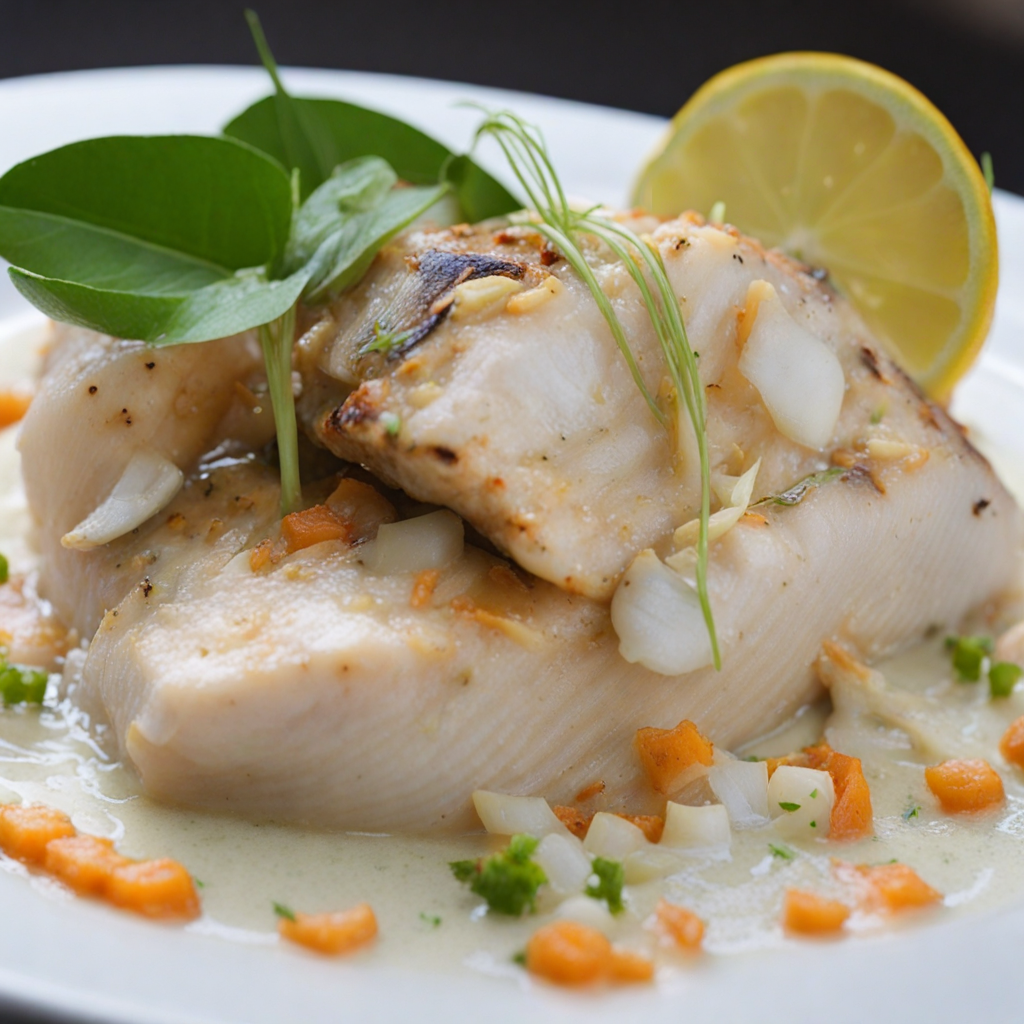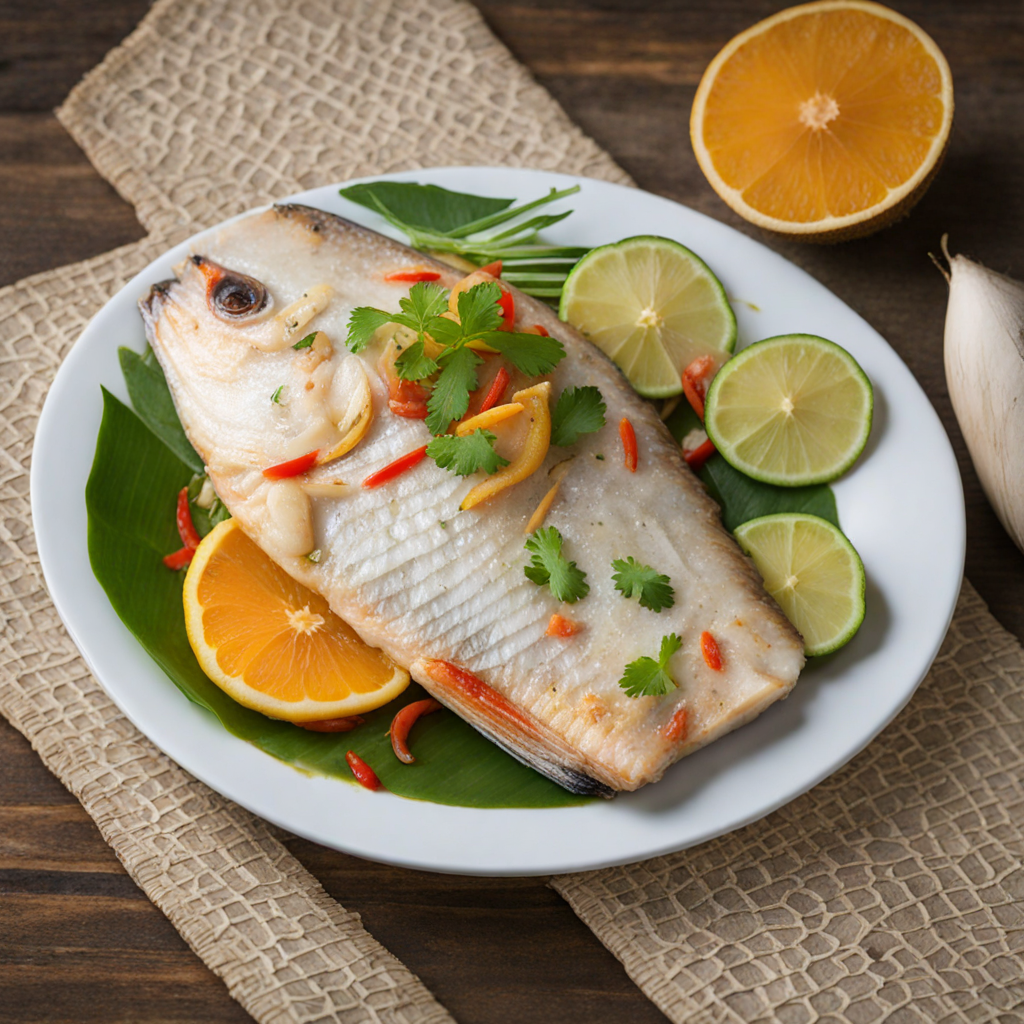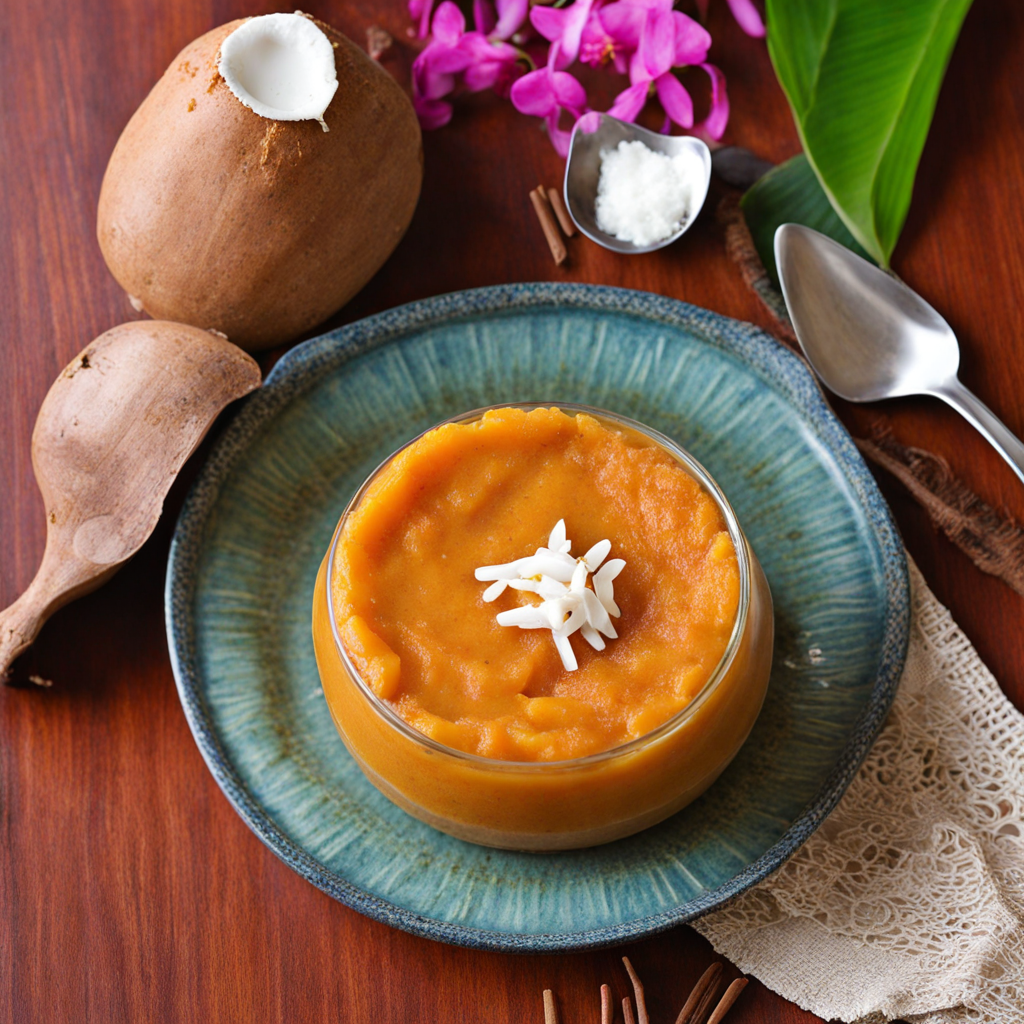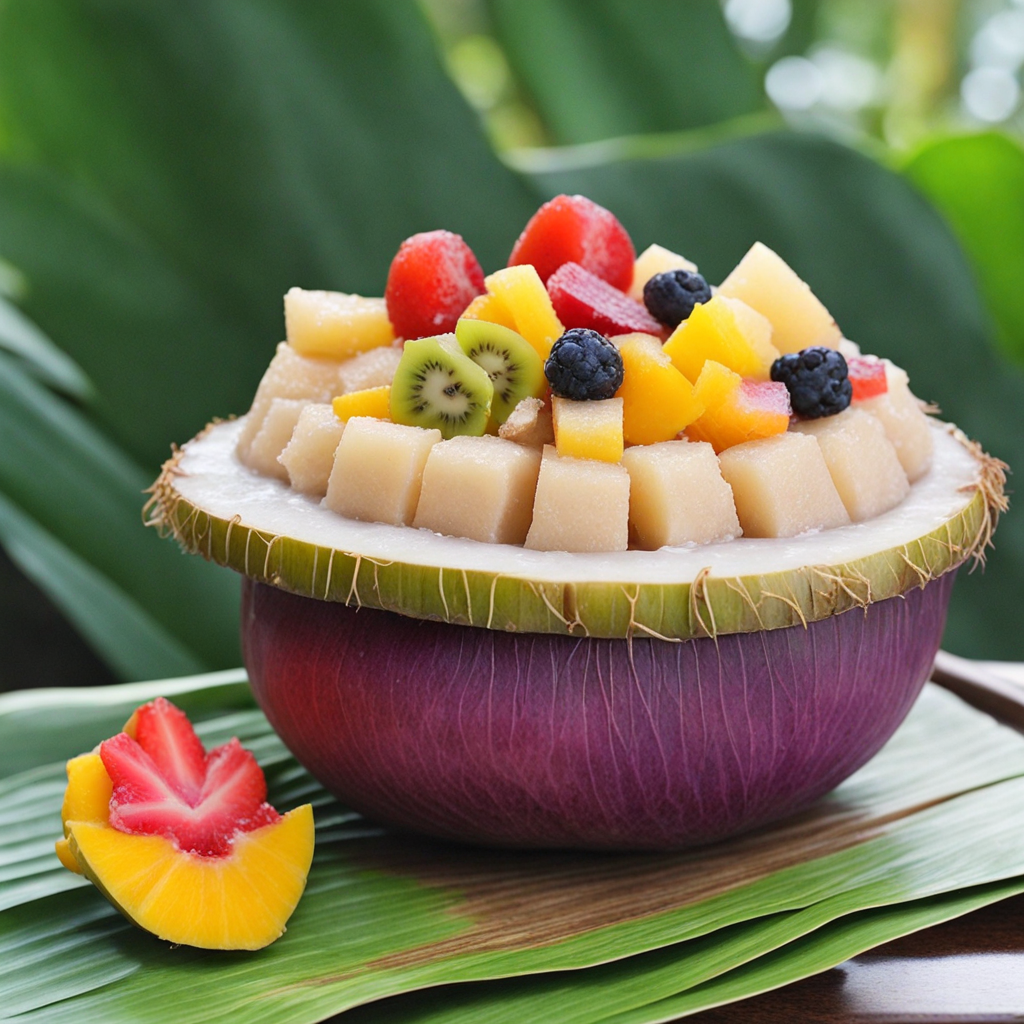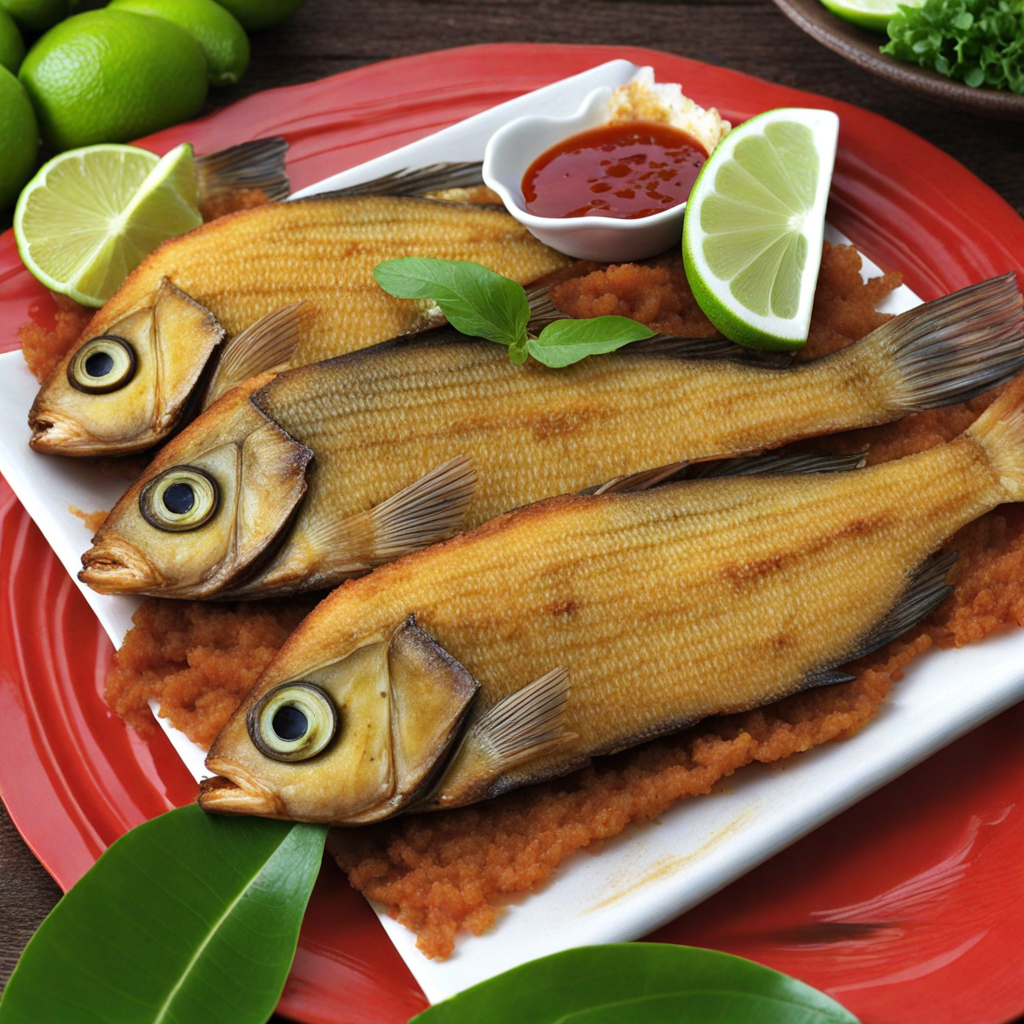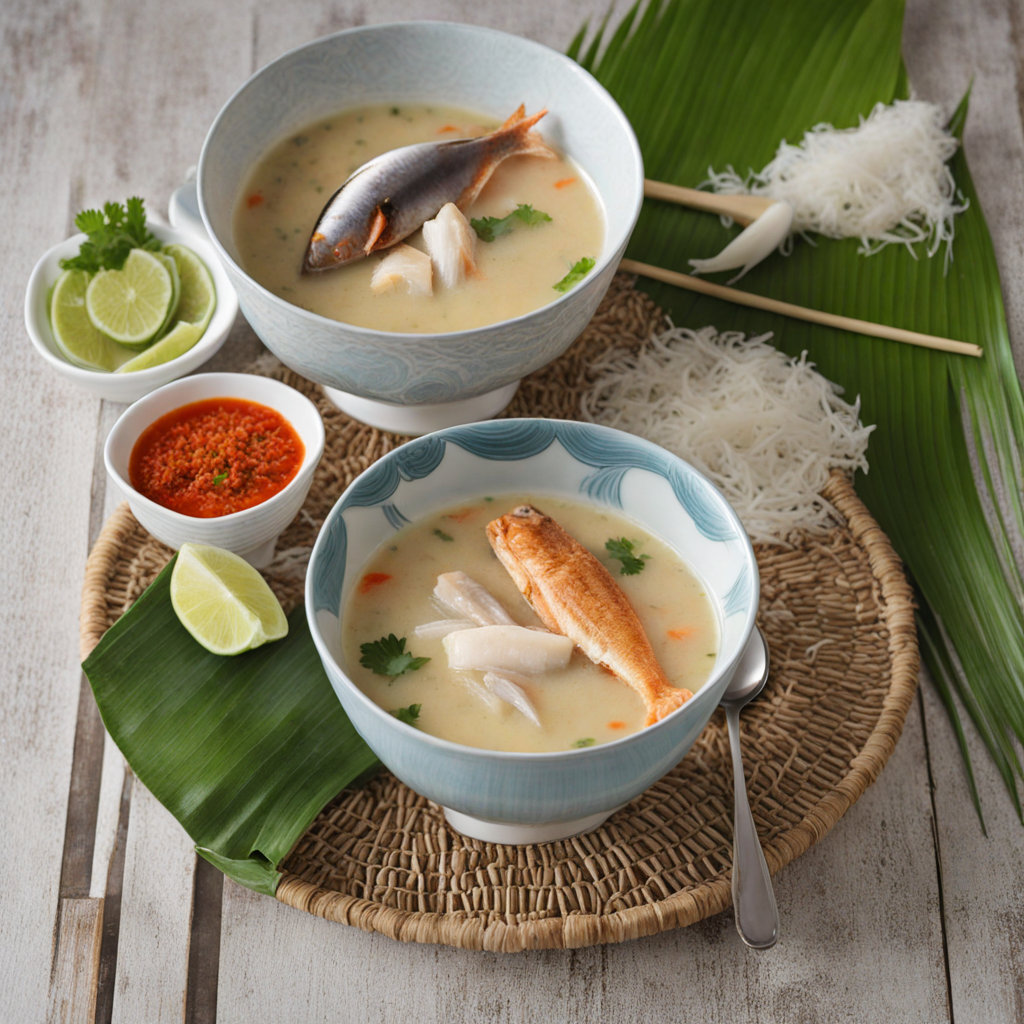Coconut Marinated Fish
Coconut Marinated Fish is a vibrant and aromatic dish that encapsulates the essence of Tuvaluan cuisine. This delightful preparation features fresh, locally sourced fish, typically caught from the crystal-clear waters surrounding the islands. The fish is marinated in a luscious blend of coconut milk, lime juice, and a symphony of spices, including garlic, ginger, and chili. The creamy richness of the coconut milk complements the delicate flavor of the fish, while the acidity of the lime adds a refreshing tang. As the fish absorbs these vibrant flavors, it transforms into a succulent dish that is both light and satisfying. The marination process is critical, allowing the fish to soak in the tropical flavors and aromas for several hours, or even overnight. This not only enhances the taste but also tenderizes the fish, creating a melt-in-your-mouth experience. The dish is often served chilled, making it a perfect option for warm tropical days. Accompanied by a side of fresh salads or traditional Tuvaluan sides, such as taro or breadfruit, it becomes a colorful and hearty meal that showcases the island's natural bounty. Coconut Marinated Fish is not just a feast for the palate but also a celebration of Tuvalu's rich culinary heritage. Each bite offers a taste of the islands, highlighting the harmonious relationship between the ocean and the land. The combination of flavors and textures creates a unique dining experience that transports you to the warm shores of Tuvalu, where the simplicity of ingredients meets the artistry of traditional cooking. Whether enjoyed at a local gathering or prepared in the comfort of your home, this dish promises to bring a slice of Tuvaluan culture to your table.
How It Became This Dish
Ika Tala: A Culinary Jewel of Tuvalu Origins and Historical Context Ika Tala, a traditional dish from Tuvalu, embodies the rich tapestry of the Pacific Islands' culinary history. Tuvalu, a small nation comprised of nine islands, is located in the heart of the Pacific Ocean, with a culture heavily influenced by its geographical setting. The name "Ika Tala" translates to "fish with coconut," a dish that showcases the abundance of marine life and the significance of coconuts in the diet and culture of the Tuvaluan people. The origins of Ika Tala can be traced back to the early Polynesian settlers who arrived in the islands around 1,000 years ago. These settlers brought with them not only their language and customs but also their culinary practices. Fishing has been a primary source of sustenance for Tuvaluans, who have developed methods for catching a variety of fish, including the prized tuna, parrotfish, and grouper. The surrounding ocean, rich in biodiversity, has allowed for a diet that is both varied and nutritious. Coconuts, introduced by early settlers, became integral to the diet and culture of Tuvalu. The coconut palm, often referred to as the "tree of life," provides not only food but also materials for shelter, tools, and crafts. The combination of fish and coconut in Ika Tala represents a harmonious blend of land and sea, reflecting the resourcefulness of the Tuvaluan people. Cultural Significance Ika Tala is more than just a meal; it is a symbol of identity and community in Tuvalu. Traditionally, fishing and cooking are communal activities, fostering social bonds among families and friends. The preparation of Ika Tala often involves gatherings, where people come together to share stories, laughter, and the fruits of their labor. This communal aspect is vital in a culture where social ties and familial connections are deeply valued. The dish is commonly served during celebrations and feasts, such as weddings, birthdays, and national holidays. It signifies abundance and gratitude, showcasing the Tuvaluans' relationship with the ocean and their respect for its resources. The method of preparing Ika Tala varies from island to island, with each community adding its unique twist to the dish. Some may marinate the fish in coconut cream and lime, while others might grill it over an open flame. These variations reflect the local ingredients available and the creativity of the cooks, further enriching the dish's cultural significance. Preparation and Ingredients The traditional preparation of Ika Tala involves fresh fish, typically caught earlier in the day, ensuring the utmost freshness. The fish is cleaned and filleted, then marinated in a mixture of coconut cream, lime juice, and a sprinkle of salt. This marinade not only enhances the flavor but also tenderizes the fish, making it succulent and delicious. The dish can be served fresh, as a ceviche-style meal, or cooked by grilling or steaming, depending on personal preference and cultural practices. Coconut cream is a standout ingredient in Ika Tala. It is made by grating the flesh of mature coconuts and extracting the liquid, which is then strained to create a rich, creamy substance. This cream adds a distinctive flavor and richness to the dish, transforming simple fish into a culinary delight. Often, additional ingredients such as chopped onions, tomatoes, and local herbs may be included to enhance the dish's complexity and visual appeal. Development Over Time While Ika Tala has deep roots in Tuvalu's culinary traditions, it has also evolved over time. As with many traditional dishes, globalization and the influence of modern cooking practices have introduced new ingredients and techniques. In recent decades, Tuvalu has seen an influx of tourists and expatriates, leading to a fusion of culinary styles. Contemporary interpretations of Ika Tala may incorporate spices and cooking methods from other cultures, such as Asian or Western influences, creating a unique blend that retains the essence of the original dish while appealing to a broader audience. Moreover, the rise of environmental awareness has prompted a shift in fishing practices in Tuvalu. As concerns about sustainability grow, many Tuvaluans are returning to traditional, sustainable fishing methods that respect the ocean's delicate ecosystems. This resurgence not only preserves the cultural heritage associated with Ika Tala but also reaffirms the community's commitment to safeguarding their natural resources for future generations. Ika Tala in Modern Tuvalu In modern Tuvalu, Ika Tala continues to be a beloved dish, often enjoyed in homes and restaurants alike. It serves as a culinary ambassador for the islands, showcasing the flavors of the Pacific and enticing visitors to experience the local cuisine. Food festivals and cultural events often feature Ika Tala as a highlight, celebrating the island's rich heritage and culinary prowess. The dish also plays a role in promoting Tuvalu's culture on the global stage. As Tuvalu faces challenges related to climate change and rising sea levels, there is a growing emphasis on preserving its cultural identity, including its culinary traditions. Ika Tala serves as a reminder of the resilience and adaptability of the Tuvaluan people, illustrating how food can act as a bridge connecting past and present, tradition and innovation. Conclusion Ika Tala is a culinary gem that encapsulates the essence of Tuvalu's culture, history, and natural bounty. From its origins in ancient Polynesian traditions to its modern iterations influenced by globalization, it remains a cherished dish that brings people together. As Tuvalu navigates the challenges of the 21st century, Ika Tala stands as a testament to the enduring spirit of its people, a reminder of their connection to the land and the sea, and a celebration of the flavors that define their identity. Through every bite, Ika Tala tells the story of Tuvalu—a story of heritage, community, and the beauty of simplicity in the heart of the Pacific.
You may like
Discover local flavors from Tuvalu


